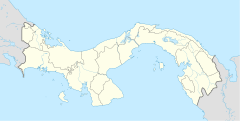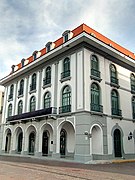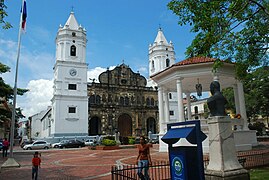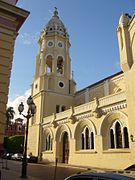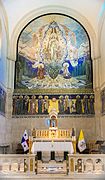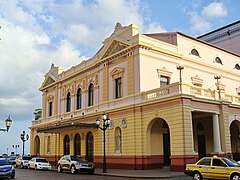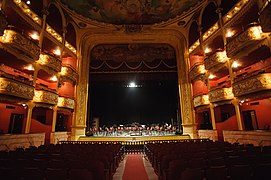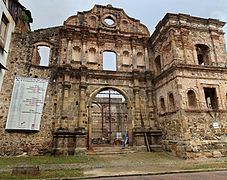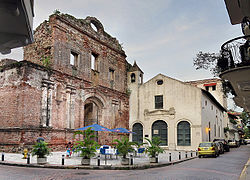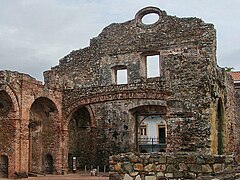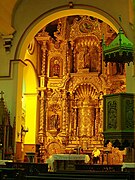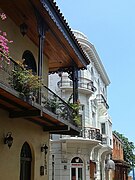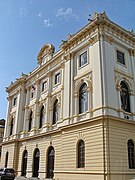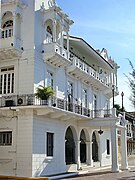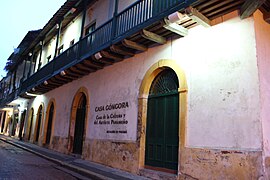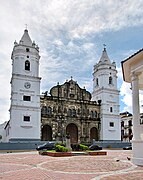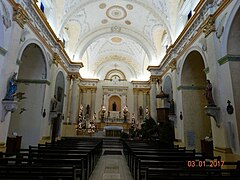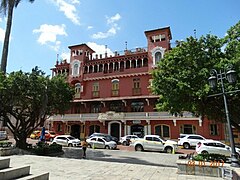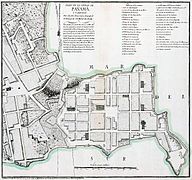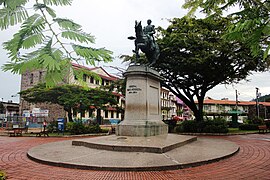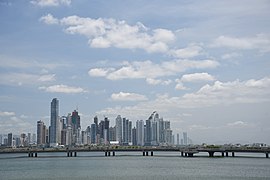Casco Viejo, Panama
You can help expand this article with text translated from the corresponding article in Spanish. (December 2011) Click [show] for important translation instructions.
|
Casco Antiguo | |
|---|---|
Historic District of Panama City | |
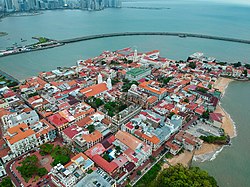 Aerial Panorama (Casco Antiguo) | |
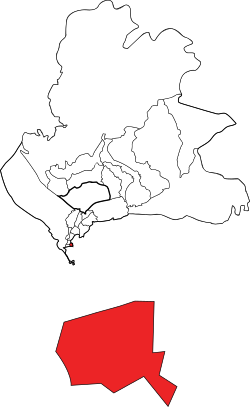 Location of San Felipe(Casco Antiguo) in Panamá province | |
| Coordinates: 8°57′09″N 79°32′06″W / 8.95250°N 79.53500°W | |
| Country | Panama |
| Province | Panamá |
| District | Panamá |
| City | Panama City |
| Website | cascoviejo.org |
| Official name | Archaeological Site of Panamá Viejo and Historic District of Panamá |
| Type | Cultural |
| Criteria | II, IV, VI |
| Designated | 1997 (21st session) |
| Reference no. | 790 |
| Extension | 2003 |
| Region | Latin America and the Caribbean |
Casco Antiguo (Spanish for Old Quarter), also known as Casco Viejo or San Felipe, is the historic district of Panama City. Completed and settled in 1673, it was built following the near-total destruction of the original Panamá city, Panamá Viejo in 1671, when the latter was attacked by pirates. It was designated a World Heritage Site in 1997.[1]
History
[edit]Panama City was founded on August 15, 1519 and it lasted one hundred and fifty-two years. In January 1671, the Governor Juan Perez de Guzman had it set on fire,[citation needed] before the attack and looting by the pirate Henry Morgan. In 1672, Antonio Fernández de Córdoba initiated the construction of a new city, which was then founded on January 21, 1673. This city was built on a peninsula completely isolated by the sea and a defensive system of walls.[2] Today this place preserves the first institutions and buildings of the modern city of Panama. It is known as Casco Viejo (Spanish for Old Town).
In the 18th century this part of the city was the victim of three large fires that partially destroyed it and modified its initial structure. The current configuration dates from the end of the 19th century and the first half of the 20th century. [3] The recostruction allows the insertion of neoclassical, Afro-Antillean buildings within the ruins and colonial buildings, which differentiates it from other old towns in cities such as Cartagena de Indias and Quito, which have an almost exclusively colonial style.
In recent years, Casco Viejo— through gentrification— has become a tourist hotspot filled with restaurants, boutique hotels, and nightclubs; while also maintaining the multiple historical sites it has to offer.[4][5]
Main sights
[edit]- La Catedral Metropolitana is the main Catholic church in Panama city.
- El Palacio de las Garzas, is the governmental office and residence of the President of Panama.
- Church and Convent of San Francisco de Asís.
- Church of San José
- Church of La Merced
- Church and Convent of Santo Domingo: Arco Chato
- Church and convent of the Society of Jesus.
- Palacio Municipal, which dates from the beginning of the 20th century.
- Palacio Nacional
- National Theatre of Panama
- Panama Canal Museum
- Palacio Bolívar
- Góngora House
- Plaza Bolívar
- Plaza Herrera
- Plaza de Francia
- Plaza de la Independencia
Gallery
[edit]-
Plaza de la Independencia
-
San Francisco de Asís Church
-
Inside San Francisco de Asís Church
-
National Theater
-
Inside the National Theater
-
Society of Jesus
-
Convento de Santo Domingo
-
Arco Chato
-
San José Church
-
Typical houses
-
Palacio Nacional
-
Palacio de las Garzas
-
Casa Góngora
-
Catedral Metropolitana
-
Inside the Catedral Metropolitana
-
Plaza Bolivar
-
Map of Panama and its suburb in 1789
-
Plaza Herrera
-
Panama City view from Casco Viejo
References
[edit]- ^ "Archaeological Site of Panamá Viejo and Historic District of Panamá". whc.unesco.org. UNESCO World Heritage Centre. Retrieved 27 May 2011.
- ^ Castillero, Alfredo (2004). UNESCO Guides: Panamá la Vieja and Casco Viejo. UNESCO Publishing. ISBN 92-3-103923-7.
- ^ Ciudad de Panamá, cinco siglos de historia. Ediciones Balboa. 2010.
- ^ "The Gentrification of Casco Viejo, Panama – Salt Trails". salttrails.com. Archived from the original on 2021-05-16. Retrieved 2021-03-04.
- ^ Gold, David. "Nightlife in Casco Viejo". Casco Antiguo Spanish School. Retrieved 2021-03-04.
External links
[edit]- Official website
 (in Spanish)
(in Spanish)

